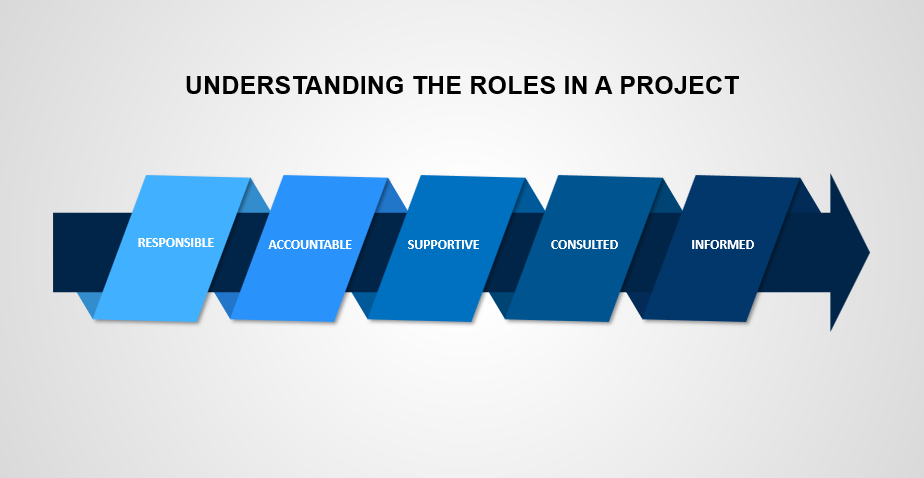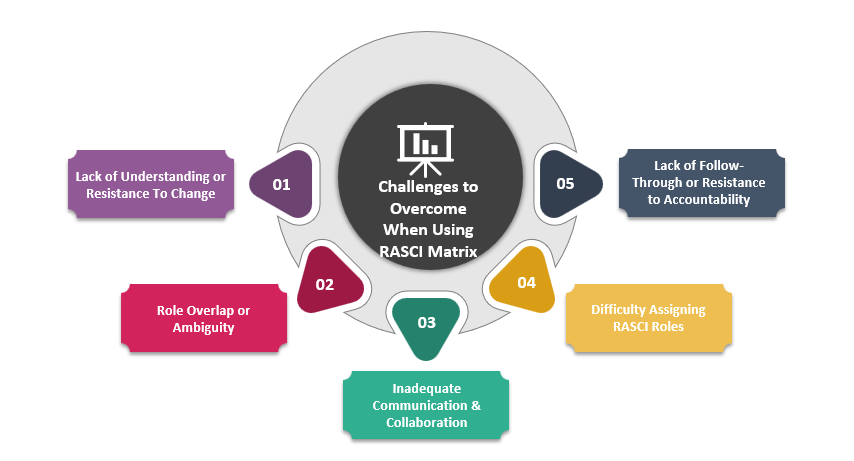Comprehensive Guide to Creating A RASCI Matrix: Step-by-Step Instructions
The RASCI matrix defines the roles and responsibilities of a project or an organization. The acronym stands for Responsible Accountable Supportive Consulted and Informed. It provides a framework to understand who is responsible for decisions, for outcomes, for providing support, for consulting, and for informing.
The RASCI matrix can help teams improve communication, clarify their expectations, and streamline the decision-making process. This blog will examine the benefits of RASCI and give practical tips on how to implement it.

Understanding the Roles in a Project
It is important to clearly understand the roles and responsibilities of each team member in any project. The RASCI matrix is a helpful framework to define these roles and ensure everyone understands their responsibilities.
1. Responsible: A person who is responsible for the completion of a task or activity. They are responsible for completing the task successfully and often perform the work.
2. Accountable: A person with ultimate responsibility and authority to make decisions for a specific task or activity. They are responsible for ensuring the task is completed within the budget and on time. The person who is accountable for completing the task on time, within budget, and to the required standard is usually a manager or a team leader.
3. Supportive: Individuals or teams that support or assist the person responsible. Supportive: Individuals or teams who offer assistance, guidance, and resources to complete a task.
4. Consulted: Before any decision or action, the people involved must be consulted. Their expertise or input can have a positive impact on the outcome. Consult these people to ensure that all perspectives are taken into consideration and that the decisions made are well-informed.
5. Informed: The person who needs to be informed of the outcome or progress of the task. Although they may not have been directly involved in the project, they must be informed of any results or implications that could affect their work.
By defining these roles and responsibilities using the RASCI matrix, teams can improve communication, streamline the decision-making process, and ensure everyone is on the right page. This promotes accountability and collaboration, resulting in more successful and efficient project outcomes.
How to Create a RASCI Matrix
A RASCI Matrix helps define and clarify roles within a project. Following these steps will help teams create a RASCI Matrix.
1. Identify All Tasks & Activities: List all tasks and activities required to complete the project. It is easier to assign responsibility when you break the project into smaller tasks.
2. Identify The Project's Key Roles: Identify the roles and positions that are most important to the project. These roles can include the project manager, team lead, subject matter expert, and other members of the team who have a significant impact on the project's outcome.
3. Assign Individuals To Complete Tasks: For every task or activity, determine the person(s) who are responsible for the completion of the work. This person is responsible for completing the task successfully and on schedule.
4. Identify The Accountable Individuals: Identify the person(s) responsible for ensuring that each task is completed successfully. This person is in charge of the project and has the authority to make decisions.
5. Find Supportive Individuals And Teams: Identify the individuals or groups that will assist or support the person responsible. These individuals can provide guidance, resources, or expertise to complete the task.
6. Identify The Individuals That Need To Be Consulted: Identify who needs to be consulted before any decision or action for each task is taken. These individuals can provide valuable expertise or input that will influence the outcome.
7. Identify The Individuals Who Need To Be Informed: Identify the individuals who need to be informed of the progress or result of each task. They may not have been directly involved in the project, but they must know the outcome or the implications of their work.
8. Create The RASCI Matrix: Once all roles and responsibilities are identified, create a matrix. You can use a spreadsheet format or a table to create this matrix. List each task in a column and list the individuals responsible, accountable, and supportive in another column.
9. Communication And Review: Ensure that all team members are aware of their roles and responsibilities, as outlined by the RASCI Matrix. As the project advances, update and review the matrix regularly. Roles may change.
Following these steps will allow teams to create a RASCI Matrix, which provides structure and clarity for the project. This improves communication, accountability, and collaboration.

Common Challenges When Using The RASCI Matrix and How To Overcome Them
There are several common challenges you might face when implementing the RASCI Matrix.
Knowing how to overcome these challenges will ensure that the matrix is implemented successfully and its effectiveness maximized. Here are six challenges that you may face and the strategies to overcome these obstacles:
1. Lack of Understanding or Resistance To Change: The main challenge when introducing the RASCI Matrix to stakeholders is their resistance to change. Some people may need more time to understand the concept, or they may be hesitant to adopt a different system. For this reason, it is important to provide thorough training, as well as clear communication, about the purpose, benefits, and expectations of the matrix. Address any concerns and misconceptions, and stress how the matrix will improve accountability, clarity, and project management.
2. Role Overlap or Ambiguity: Organizations may also face the challenge of accurately defining and allocating RASCI roles. The ambiguity of roles or their overlap can cause confusion, duplicate efforts, or job gaps. Clarify the scope and responsibilities for each role in the matrix to overcome this challenge. Consult key stakeholders in order to document roles and responsibilities that have been agreed upon. Review and update the matrix regularly to reflect any changes or newly discovered ambiguities.
3. Inadequate Communication & Collaboration: Effective communication is essential for a successful implementation of the RASCI Matrix. Organizations may require assistance in establishing clear channels of communication and encouraging collaboration between team members. To overcome this problem, clearly define communication protocols and channels of consultations and sharing information. Encourage open communication and foster a culture of collaboration and teamwork. Review and update the matrix regularly to include feedback from team members and their insights and ensure that channels and protocols are effective and efficient.
4. Difficulty Assigning RASCI Roles: It can be challenging to assign RASCI roles, particularly in organizations or projects with many stakeholders. Involve key stakeholders in role assignments to overcome this challenge. Ask for their opinions and input to make sure that the RASCI roles assigned are based on authority, expertise, and level of involvement. Consider holding discussions or workshops to facilitate the process of role assignment and ensure that all perspectives are taken into consideration.
5. Lack of Follow-Through or Resistance to Accountability: Accountability is a key component of the RASCI Matrix. However, some organizations need assistance in establishing a culture that encourages accountability and ensures that assigned responsibilities are consistently followed through. In order to overcome this problem, you should emphasize the importance of both individual and group accountability. Encourage individuals to assume responsibility for their roles and fulfill their responsibilities by creating a supportive work environment. Regularly evaluate and acknowledge the contributions of individuals and offer feedback and support as needed.
The matrix, when implemented correctly, can improve project management, increase accountability, and result in successful project outcomes. To achieve the best results, stay proactive, ask for feedback, and continually improve your use of the matrix.
The Benefits of Using a RASCI Matrix
The use of a RASCI matrix in project management has several advantages for teams and organizations. The following are some of the main advantages of using a matrix.
1. Clearly Defined Roles And Responsibilities: The RASCI Matrix can help define and clarify the roles and responsibilities of teams or individuals involved in a particular project. It eliminates ambiguity, and everyone knows their specific roles and contributions. Clarified roles promote accountability, reduce ambiguity, and encourage collaboration.
2. Communication And Coordination Are Improved: The RASCI Matrix improves communication within the team by clearly identifying those who need to be consulted for each task. This encourages collaboration and coordination among team members. It also prevents duplication of effort and ensures everyone is on the right page.
3. Enhanced Decision Making: The RASCI Matrix gives the decision-making power to the individuals who are responsible for each task. The RASCI Matrix ensures the right people are making decisions, resulting in more efficient and effective outcomes. The matrix also identifies individuals that need to be consulted. This ensures that essential perspectives and expertise are considered before making any decisions.
4. Enhanced Productivity And Efficiency: The RASCI Matrix streamlines the workflow by assigning specific responsibilities. This eliminates confusion and duplication of work. Each member of the team knows what their responsibilities are, increasing productivity and helping to meet project deadlines and milestones.
5. RASCI Matrix: This matrix allows organizations to identify the individuals or teams that can assist or support the person responsible. It helps to allocate resources with greater precision, as it ensures the right people are engaged in each task. This helps to prevent individuals from being overloaded with responsibility by effectively distributing the workload.
6. Improved Project Outcomes: The RASCI Matrix leads to better project outcomes by clearly defining roles and enhancing communication. It reduces conflict, helps to avoid misunderstandings, and ensures that the project proceeds smoothly. The matrix is a structured framework that supports project execution efficiently and helps achieve project goals.
In general, using a matrix RASCI offers many benefits to project managers and teams. It improves communication, coordination, and project outcomes by providing clarity, structure, and accountability.
Conclusion
The RASCI Matrix is a powerful tool for accountability and clarity. This tool can be used to improve project management, create a culture that values ownership and accountability, and help your organization achieve success. Embrace RASCI Matrix. Stay proactive and improve continuously to achieve optimal results.



